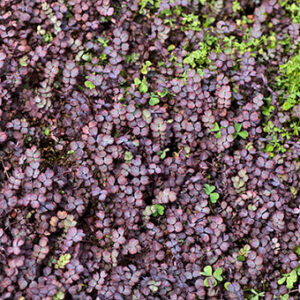Penstemon hartwegii ‘Hartweg’s Beardtongue’
£8.50
Frequently Bought Together



Description
Penstemon hartwegii (Hartweg’s Beardtongue)
Quick Facts
- Common Name: Hartweg’s Beardtongue, Hartweg’s Penstemon
- Botanical Name: Penstemon hartwegii
- Plant Type: Herbaceous Perennial
- Mature Height: 60-90cm
- Mature Spread: 30-45cm
- Flowering Period: June to October
- Flower Colour: Scarlet-red tubular blooms with white throats
- Foliage: Lance-shaped, bright green leaves
- Hardiness: RHS H4 (Hardy in most areas)
- Soil Requirements: Well-drained, fertile soil
- Aspect: Full sun to partial shade
- Maintenance: Low to moderate
Description
Like ruby jewels scattered through the garden border, Penstemon hartwegii brings a vibrant splash of Mexican warmth perfectly suited to Irish gardens. This spectacular perennial creates towering spires of brilliant scarlet-red tubular flowers that seem to glow with inner fire, transforming ordinary spaces into something truly enchanting whilst thriving in our temperate climate.
The elegant trumpet-shaped blooms emerge from early summer and continue their dazzling display well into autumn, each flower adorned with a pristine white throat that creates striking contrast against the vivid red petals. Rising above neat clumps of bright green, lance-shaped foliage, these flower spikes create dramatic vertical accents that draw the eye and add architectural interest to any planting scheme.
Named after the German botanist Karl Theodor Hartweg, this Mexican native has adapted beautifully to Irish conditions, proving remarkably resilient to our changeable weather whilst maintaining its long flowering season. The upright growth habit and bushy nature make it perfect for middle to back borders, where its height and colour can be fully appreciated without overwhelming smaller companions.
Pair this stunning penstemon with silver-leaved plants like Artemisia or Stachys for elegant contrast, or combine with other hot-coloured perennials such as Crocosmia and Helenium for a fiery display. It’s particularly beautiful when planted near seating areas where visiting hummingbird moths and bees can be observed enjoying the nectar-rich blooms, making it an ideal choice for family gardens seeking wildlife-friendly beauty.
Caragh Garden Notebook
Plant in spring after the last frost in well-drained, fertile soil, spacing 30-40cm apart. Excellent for container growing – use a good quality multipurpose compost with added grit for drainage and position in full sun. Thrives in neutral to slightly alkaline soils but adapts to most garden conditions provided drainage is adequate.
Water regularly during dry spells, especially in containers, but avoid waterlogging which can cause root rot. Deadhead spent flowers regularly to encourage continuous blooming and prevent self-seeding. In colder areas, provide winter protection with a mulch of bark chips or fleece, and cut back to ground level in late February before new growth begins.
Divide established clumps every 3-4 years in spring to maintain vigour, or take basal cuttings in late spring for new plants. In mild areas, plants may behave as short-lived perennials, so it’s wise to take cuttings as insurance against harsh winters.





